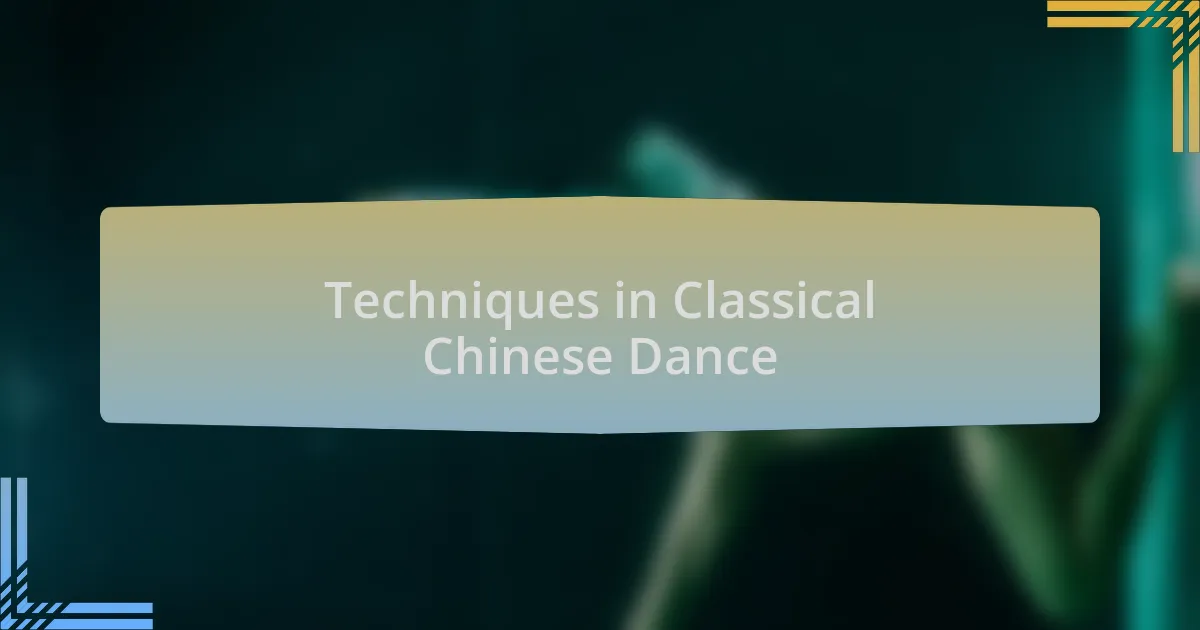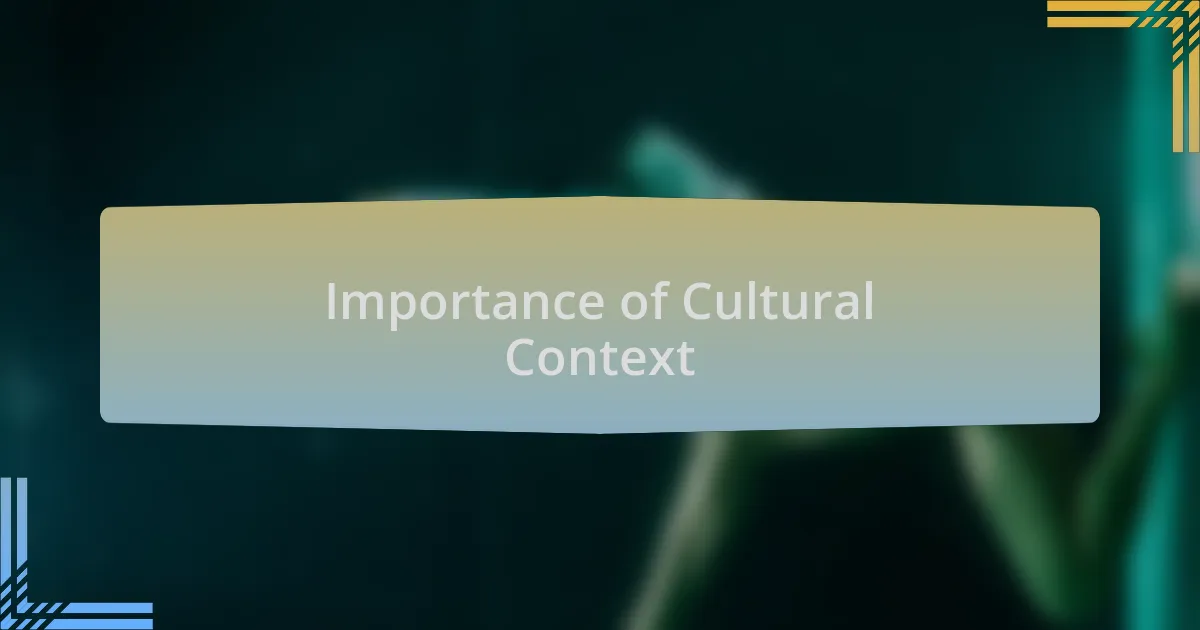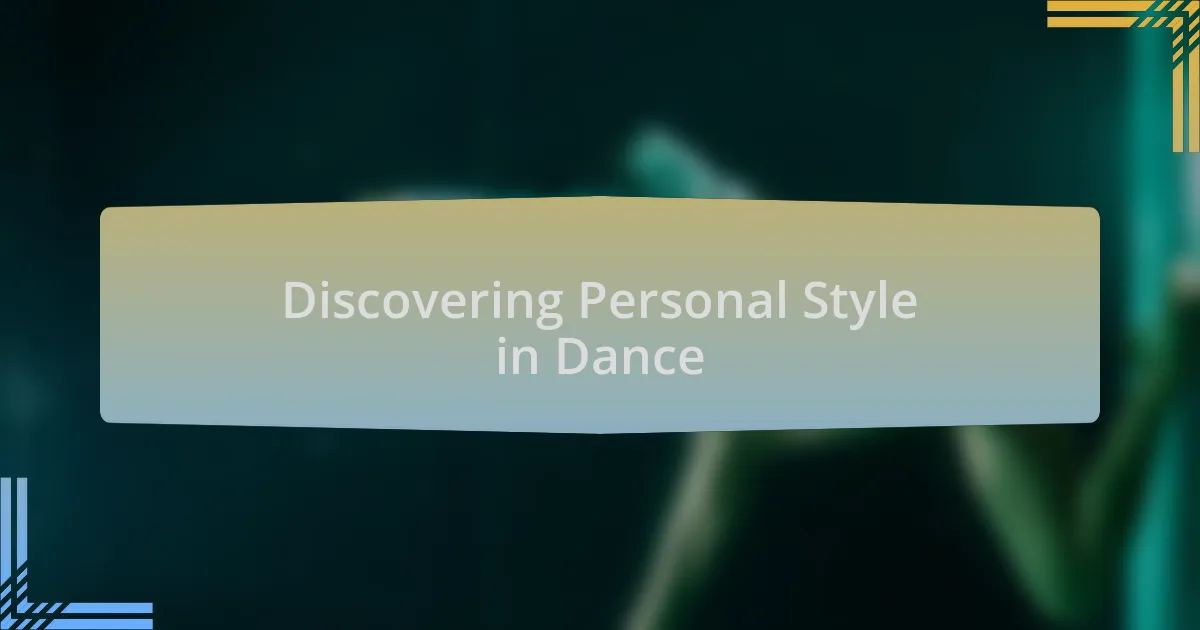Key takeaways:
- Classical Chinese dance combines graceful movements with cultural storytelling, emphasizing balance, strength, and flexibility.
- The technique of “Shen Yun” highlights the importance of breathing life into movements, connecting internal feelings to external expressions.
- Understanding cultural context enriches emotional expression and allows for deeper connections to the art form.
- Challenges in mastering techniques lead to personal growth and highlight the significance of patience and community support in the learning process.

Understanding Classical Chinese Dance
Classical Chinese dance is a captivating form of art that blends graceful movements with rich cultural storytelling. I remember my first class, standing among experienced dancers, feeling a wave of admiration as they seamlessly expressed emotions through their fluid bodies. Isn’t it fascinating how, through a simple gesture, a dancer can evoke such profound feelings and narratives?
The foundation of this dance style lies in its emphasis on balance, strength, and flexibility. I often find myself challenged by the intricate postures, which require not just physical prowess but also a deep connection to the rhythms of the accompanying music. Have you ever considered how every spin and leap tells a story that transcends language?
What truly sets Classical Chinese dance apart is its ability to embody centuries of tradition. Each movement carries historical significance, often inspired by ancient legends, folklore, or philosophical concepts. Reflecting on my own journey, I’ve realized that learning these dances has been more than just physical training; it’s become a path to understanding the culture and history of a people, making every session feel like a delightful dive into time itself.

Techniques in Classical Chinese Dance
The techniques in Classical Chinese dance are a beautiful tapestry of precision and artistry. As I practiced my first basic movements, I felt a sense of discipline emerge in my routine, where every arm position had a purpose and every foot placement mattered. Have you ever noticed how a well-executed form can resonate with an audience even before a single emotion is expressed?
One of the most remarkable aspects is the concept of “Shen Yun,” which translates to “spirit movement.” It’s not just about the physical execution; it’s about breathing life into each gesture. During my lessons, I was taught to connect my internal feelings with the external movements, allowing me to express joy or sorrow with equal intensity. Isn’t it incredible that a slight tilt of the head or a gentle arc of the hand can convey an entire narrative?
As I honed my skills, I discovered the importance of using the core muscles to execute fluid transitions between movements. I remember a particularly challenging routine that required me to shift seamlessly from a graceful leap into a grounded stance. It reminded me that every technique, every skill, is a conversation between the body and the soul, creating a dialogue that is as profound as it is beautiful. How often do we find that art reflects the depth of our human experience?

Importance of Cultural Context
Understanding the importance of cultural context in Classical Chinese dance has been a revelation for me. Each movement carries historical significance, rooted in centuries of tradition, which adds layers to my practice. For instance, when I learned the “Lotus Flower” pose, I was struck by its symbolism of purity and enlightenment. This made me ponder—how often do we overlook the stories behind the art we perform?
I vividly recall a moment during class when our instructor explained how specific techniques were influenced by ancient Chinese philosophies. It connected me deeply to the dance, as I started to see my movements reflect concepts like balance and harmony. Isn’t it fascinating how the philosophy of the past can inform our artistry today? I found myself questioning how much more meaning can be found when we appreciate these cultural underpinnings.
Moreover, being aware of the cultural context has enriched my emotional expression on stage. There was a time when I performed a piece inspired by a traditional legend, and understanding its backstory allowed me to channel the characters’ emotions authentically. It made me realize that each performance is not merely a display of skills but a transmission of culture and history. How can we truly embody an art form without embracing its roots?

Discovering Personal Style in Dance
Finding my personal style in dance has been a transformative journey. During one particular class, I felt an overwhelming sense of freedom as I experimented with contrasting movements. I remember letting go of the strict form, integrating fluid gestures that felt more like a reflection of my essence. That moment made me wonder—how often do we allow ourselves the space to explore our individuality within the framework of tradition?
As I immersed myself further into Classical Chinese dance, I learned that my unique interpretation could coexist with established techniques. I vividly recall a session where we paired traditional steps with a more contemporary feel. It was exhilarating to see my classmates embrace their quirks and showcase what made them unique. I couldn’t help but question—what if our differences actually amplify the beauty of the dance instead of detracting from it?
Ultimately, I’ve discovered that my personal style is a blend of authenticity and learning. One time, during a performance, I infused my emotions related to a personal experience into a traditional piece. It was a nerve-wracking but magical moment as the audience connected with my story. Isn’t it incredible how dance allows us to share parts of ourselves in a way that transcends words? Each class helps me peel back layers, revealing not just a dancer but an artist with a voice waiting to be expressed.

Challenges Faced in Learning
As I delved into Classical Chinese dance, I quickly encountered the challenge of mastering intricate techniques. I remember standing in front of the mirror, feeling frustrated as I struggled to achieve the precise postures that seemed effortless for others. It made me reflect—how much should we value perfection versus the journey of practice?
One particular class stands out in my memory, where the choreographer emphasized the importance of energy flow. I was so focused on getting each movement right that I forgot to express the emotion behind them. I felt disconnected, almost robotic, and wondered—how can we truly dance if we aren’t in tune with our feelings? That realization marked a pivotal point in my learning process.
The physical demands of Classical Chinese dance often leave me gasping for breath, yet it’s in those moments of exhaustion that I find the most growth. I recall pushing through soreness after a long rehearsal, reminding myself that each struggle is a step toward greater resilience. Isn’t it fascinating how the challenges we face can lead to deeper connections with both ourselves and the art we pursue?

Insights Gained from Dance Classes
Through my journey in dance classes, I’ve discovered that patience is not just a virtue but a necessary ingredient for growth. In one class, I stood alongside fellow dancers, struggling with a complex routine. As frustration bubbled up, I realized that mastery doesn’t happen overnight; it’s built through small, consistent efforts. How often do we rush the learning process, forgetting that every stumble holds valuable lessons?
One day, a teacher introduced us to the concept of storytelling through movement. I felt an immediate shift when I allowed my imagination to guide my dance rather than just my limbs. I found myself immersed in the narrative, feeling the choreography instead of merely executing it. It made me wonder—how can embodying a story enhance our connection to the audience and our responsiveness in dance?
Reflecting on my experiences, I’ve learned the essential role of community in dance. During a particularly grueling rehearsal, a fellow dancer offered me words of encouragement, and it struck me that we are not alone in our struggles. This camaraderie fosters a supportive environment, encouraging us to lift one another up. Isn’t it amazing how shared experiences can inspire resilience in ourselves and our fellow dancers?